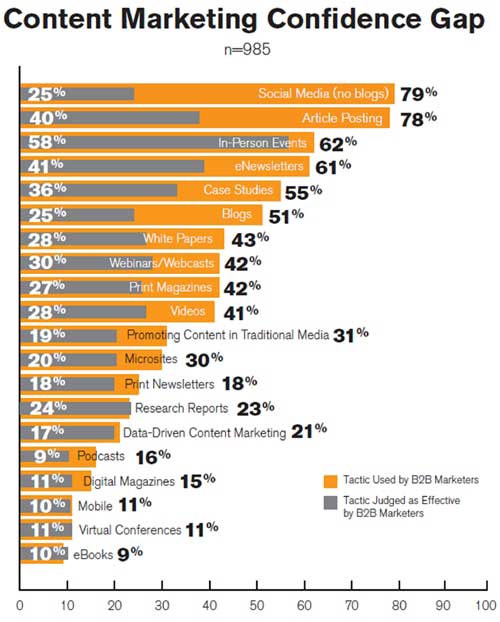Webinars are a wonderfully robust and lively marketing tool, and an effective way to reach your prospects or buyers.
Or, rather, they can be.
A study by Business.com found that a whopping 67% of business leaders who rely on social media for business information seek out relevant podcasts or webinars.
That stat screams opportunity, doesn't it?
Why do webinars rock? Because they are...
- Interactive and social. Done right, webinars feel like real-world classrooms or conference rooms. Participants get a chance to ask questions and chat with the speaker, the moderator, and each other.
- Less intimidating. Maybe your prospects aren't quite ready to field a call from your sales team, but they are happy to hear what you are all about in a no-pressure webinar in which they are one of many.
- Affordable. As online conferencing technology has evolved, the cost of the platforms has been steadily coming down.
- Broad-reaching. Instead of inviting a few prospects to an in-person event, you can invite hundreds to a virtual one.
- Geographically neutral. It doesn't matter whether the people you are trying to reach are in Dubuque or Dubai. They can be accommodated.
- A team player in the content mix. Webinars can be "reimagined" as many things in your marketing mix: Interview the presenter in a podcast prior to the event to build up interest and excitement; release handouts or transcripts or, after the fact, answer unanswered questions from your audience.
- Effective. Remember that earlier stat from Business.com? Further research from RAIN Group backs it up: Event or conference presentations rate second to referrals and personal awareness as the top method for how professional services companies initially identify the firms they work with.
- Door openers. Webinars give you a reason to reach out to prospects by phone or email both before and after an event.
Sounds great, right? So if webinars are so awesome, then why do many tragically underperform?
A MarketingProfs and Junta42 study that polled 1,100 North American businesses found that 42% of businesses use webinars as part of their content marketing mix—but only 30% of surveyed businesses consider them effective.

Why the "confidence gap"? Based on research that C.C. Chapman and I conducted for our new book, Content Rules, there are three key reasons—which you need to address if you want to call your webinar a success:
1. The free thing
Specifically: They are often free events focused more on generating leads for the sponsors than providing value for participants.
Too many webinars promise great content, but the sponsors or hosts don't really push the speaker to deliver on that promise. Rather, the sponsors care more about getting names to feed the sales funnel, or they want to use the webinar as a platform to sell their products or services. (This is what I call getting "pitch-slapped.")
That hurts your credibility and makes your audience suspicious of you generally.
The fix: Focus on delivering valuable content. How? Show how your product lives in the world. Or, put another way: Show, don't tell. Use case studies, client stories, or colorful anecdotes to express your ideas and thoughts. Show your products or services in action as they help customers do their jobs better, run faster, jump higher, and so on. Doing so makes your business human and accessible, because it explains your business in a way people can relate to.
2. The virtual thing
Speakers don't understand that presenting online is not the same as being in front of a live audience. It's harder to present online, to an invisible audience, than it is to present in person.
You can't look people in the eye or feed off of the room's energy; you also have to have exceptional content, because the content itself is what will engage your prospects. You can't compensate for boring, unprofessional-looking slides or a monotone voice with your winsome good looks and personality. Keeping attendees' attention is that much more challenging; it's too easy for them to check their email or Groupon's daily offering.
The fix: Schedule a rehearsal ahead of the live webinar date to run through procedures, and go over the flow of the webinar itself. Specifically, make sure the speaker and moderator are comfortable with the platform and controls, test their Internet connections and hardware, and check whether the speaker's slides look and perform as expected. (Make sure your speaker is in the same physical location he or she will be on the day of the presentation—a small point, maybe, but often overlooked.)
You don't have to run through the entire presentation, but it can help to have your speaker at least start the presentation, to be sure he or she is comfortable both advancing slides and speaking in a natural, conversational tone with that invisible audience.
Be sure to avoid the dreaded bedtime-story type of webinar, in which a speaker reads the words on the slide rather than telling the story in his or her own words. Attendees, who likely read faster than the speaker speaks, will find such a presentation particularly grating.
3. No one asked, "What if we have to emergency-land in the Hudson?"
Live webinars are still vulnerable to technical glitches, or a no-show speaker, or a rough presentation. Practice, test, rehearse, and plan for a possible disaster. Just in case.
The fix: You might rehearse to within an inch of your life, but still stuff happens, right? You may not be called upon to land a plane in the Hudson River, but you should plan for the unforeseen and mitigate where you can. For example: Get your speakers' cell phone or emergency numbers in case they don't show; be sure they have their slides printed out so they can present from paper if they lose their Internet connection; have a message prepared in the unlikely (but still possible) event that there's a total crash of the Web conferencing platform. As with any disaster, preparedness is the key.
* * *
So what else would you say? How else do you ensure a quality webinar experience?




